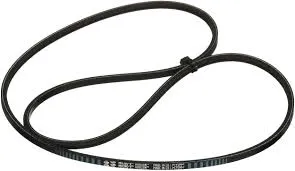- Arabic
- French
- Russian
- Spanish
- Portuguese
- Turkish
- Armenian
- English
- Albanian
- Amharic
- Azerbaijani
- Basque
- Belarusian
- Bengali
- Bosnian
- Bulgarian
- Catalan
- Cebuano
- Corsican
- Croatian
- Czech
- Danish
- Dutch
- Afrikaans
- Esperanto
- Estonian
- Finnish
- Frisian
- Galician
- Georgian
- German
- Greek
- Gujarati
- Haitian Creole
- hausa
- hawaiian
- Hebrew
- Hindi
- Miao
- Hungarian
- Icelandic
- igbo
- Indonesian
- irish
- Italian
- Japanese
- Javanese
- Kannada
- kazakh
- Khmer
- Rwandese
- Korean
- Kurdish
- Kyrgyz
- Lao
- Latin
- Latvian
- Lithuanian
- Luxembourgish
- Macedonian
- Malgashi
- Malay
- Malayalam
- Maltese
- Maori
- Marathi
- Mongolian
- Myanmar
- Nepali
- Norwegian
- Norwegian
- Occitan
- Pashto
- Persian
- Polish
- Punjabi
- Romanian
- Samoan
- Scottish Gaelic
- Serbian
- Sesotho
- Shona
- Sindhi
- Sinhala
- Slovak
- Slovenian
- Somali
- Sundanese
- Swahili
- Swedish
- Tagalog
- Tajik
- Tamil
- Tatar
- Telugu
- Thai
- Turkmen
- Ukrainian
- Urdu
- Uighur
- Uzbek
- Vietnamese
- Welsh
- Bantu
- Yiddish
- Yoruba
- Zulu
ডিসে. . 13, 2024 11:23 Back to list
v belt pulley material
Understanding V-Belt Pulley Materials A Comprehensive Overview
V-belt pulleys are essential components in various mechanical systems, particularly in power transmission applications. These pulleys are designed to work in tandem with V-belts to transfer power effectively between rotating shafts. The material composition of V-belt pulleys significantly influences their performance, durability, and overall efficiency. In this article, we will explore the common materials used in the manufacturing of V-belt pulleys, their characteristics, and the factors influencing material selection.
Common Materials for V-Belt Pulleys
1. Cast Iron Cast iron is one of the most widely used materials for V-belt pulleys. It is favored for its excellent wear resistance and ability to withstand high loads. Cast iron pulleys are capable of absorbing vibrations, which makes them suitable for heavy industrial applications. The primary drawback of cast iron is its brittleness, which can lead to cracking under certain stress conditions. However, when appropriately designed and used within the manufacturer’s specifications, cast iron pulleys can provide long-lasting performance.
2. Aluminum Aluminum pulleys are another popular choice due to their lightweight attributes. This material is particularly advantageous in applications where reducing weight is crucial, such as in automotive and aerospace industries. Aluminum offers good corrosion resistance and can be easily machined into various shapes and designs. However, aluminum may not offer the same strength as cast iron, making it less suitable for high-load contexts.
3. Steel Steel pulleys combine high strength with durability, making them a go-to option for many heavy-duty applications. Steel is also known for its ability to handle high torque and for its resilience to wear and tear. However, steel pulleys can be susceptible to corrosion, particularly in harsh environments, which necessitates protective coatings or treatments to enhance their longevity.
4. Plastic and Composites In recent years, the use of plastics and composite materials in pulley design has gained popularity, particularly in light-duty applications. These materials are lightweight and resistant to corrosion and chemicals. They also minimize noise and vibration during operation. However, they generally have lower strength and may not be suitable for high-stress applications.
Influencing Factors for Material Selection
v belt pulley material

When choosing the appropriate material for V-belt pulleys, several factors come into play
- Load Conditions The expected load requirements will heavily influence the choice of material. High-load applications may necessitate the use of cast iron or steel, while lightweight applications may benefit from aluminum or plastic.
- Environmental Considerations Pulleys exposed to corrosive conditions require materials that can withstand such environments. For instance, stainless steel or specially treated aluminum may be used in marine or chemical processing applications.
- Cost Efficiency Budget constraints can influence material selection. While cast iron may be more cost-effective for heavy-duty applications, plastic could be more economical for lighter, less demanding uses.
- Manufacturing Methods The method of production can determine which materials are feasible to use. For instance, injection-molded plastics are efficient for mass production, while machining metal parts may provide more precision but at a higher cost.
- Operational Speed The speed at which the pulley will operate can also impact material decisions. Higher speeds may benefit from materials that reduce weight and inertia, leading to better energy efficiency.
Conclusion
The choice of material for V-belt pulleys is a critical factor in the design and efficiency of mechanical systems. Each material—whether it be cast iron, aluminum, steel, or plastics—offers its unique set of advantages and disadvantages. Understanding the specific requirements of the application, such as load conditions, environmental factors, and cost constraints, can guide engineers and designers in selecting the most appropriate pulley material. Ultimately, the right choice will not only enhance performance but also improve the longevity and reliability of the entire system.
-
Korean Auto Parts Timing Belt 24312-37500 For Hyundai/Kia
NewsMar.07,2025
-
7PK2300 90916-T2024 RIBBED BELT POLY V BELT PK BELT
NewsMar.07,2025
-
Chinese Auto Belt Factory 310-2M-22 For BMW/Mercedes-Benz
NewsMar.07,2025
-
Chinese Auto Belt Factory 310-2M-22 For BMW/Mercedes-Benz
NewsMar.07,2025
-
90916-02660 PK Belt 6PK1680 For Toyota
NewsMar.07,2025
-
drive belt serpentine belt
NewsMar.07,2025

